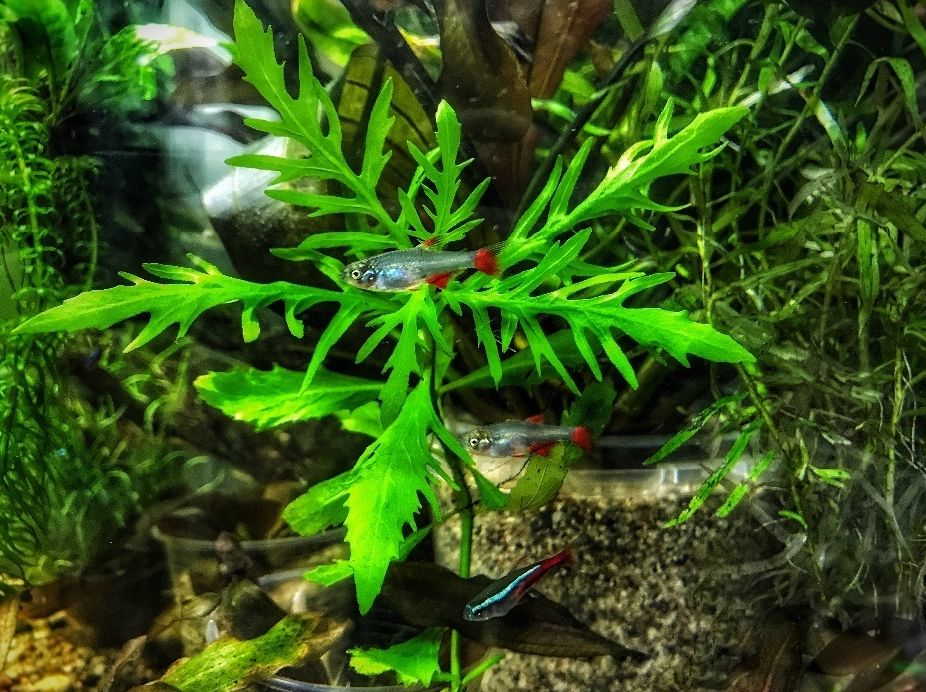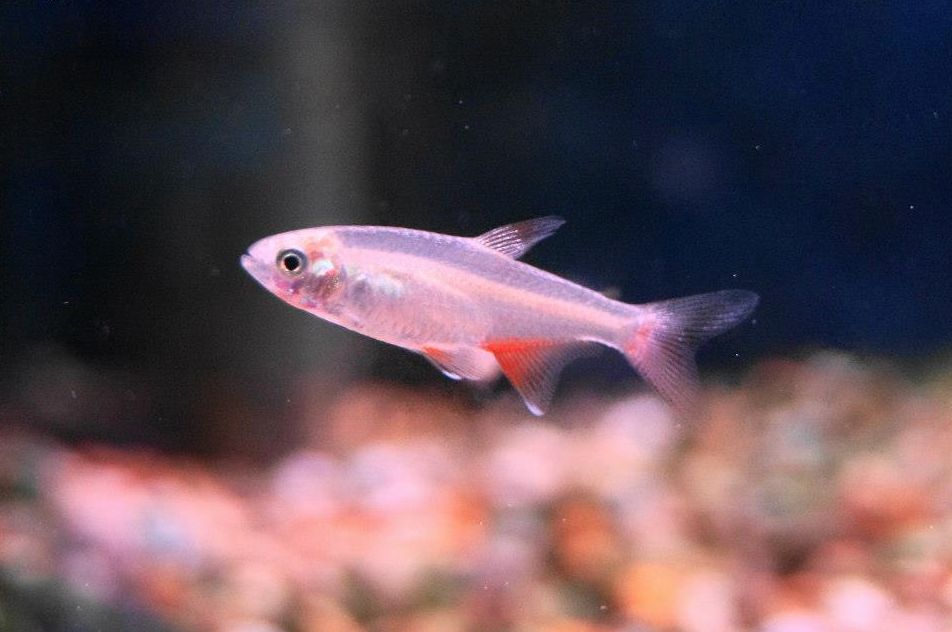The bloodfin tetra (Aphyocharax anisitsi) is a small, lively fish from the Characidae family that is ideal for beginner aquarists. Known for its vibrant appearance and energetic behavior, this freshwater fish is highly adaptable to a wide range of tank conditions.
One of the bloodfin tetra’s standout traits is its tolerance for a variety of water parameters. Unlike many tropical fish, bloodfin tetras can thrive in cooler water temperatures. Some aquarists even successfully keep them in unheated tanks at room temperature. This adaptability makes them a convenient choice for those new to aquarium keeping.

Contents
Habitat in the wild
The bloodfin tetra is a captivating freshwater fish native to South America, specifically found in the river tributaries, distributaries, and streams of the Paraná, Paraguay, and Uruguay rivers. Understanding the bloodfin tetra’s natural habitat is essential for providing optimal care in an aquarium setting.
In their native environment, these fish thrive in areas shaded by floating plants, such as water lilies and various species of duckweed, along with overhanging vegetation from trees and shrubs. This natural cover is crucial, as it creates a secure atmosphere that offers both protection and a sense of safety for the bloodfin tetra. The presence of floating plants and dense foliage not only provides shelter but also diffuses light, closely mimicking the lighting conditions found in their home waters.
Description
Body and color
This fish has greenish body with violet tint, the sides are iridescent. Unpaired abdominal fins base has saturated red coloring, due to which the breed got its name.
The fish scales are rather large. Male fish species have bluish anal fin edges. Besides they have a small hooked outgrowth on the anal fin; the fish quite often gets stuck in a dip net due to it when moving the fish into another volume. When the fish gets frightened or stressed it becomes pale and dim colored.
Size
Bloodfin tetras typically grow to a size of about 5 to 5.5 cm (2 inches) in length. This is the average size for adult fish, though individual Tetras may vary slightly in size. Factors such as diet, care, and tank environment significantly influence their growth. Providing proper nutrition and a well-maintained aquarium can support healthy development and help your Bloodfin Tetras reach their full size.
Lifespan
The average lifespan of bloodfin tetras is typically around 3 to 5 years when kept in proper aquarium conditions. However, with optimal care, some individuals have been known to live up to 7 years or longer. Several factors can influence the lifespan of bloodfin tetras, including water quality, nutrition, genetics, and overall health.
| Characteristic | Description |
|---|---|
| Scientific Name | Aphyocharax anisitsi |
| Common Names | Bloodfin Tetra |
| Origin | South America (Argentina, Paraguay, Uruguay) |
| Adult Size | Up to 2 inches (5 centimeters) |
| Lifespan | 3-5 years |
| Temperament | Peaceful, schooling fish |
| Coloration | Silver body with bright red fins |
| Tank Size | 20 gallons (75 liters) or larger |
| Water Temperature | 72°F – 78°F (22°C – 26°C) |
| pH Range | 6.5 – 7.5 |
| Water Hardness | Soft to slightly hard water |
| Diet | Omnivorous, accepts high-quality flake or pellet food, supplemented with live or frozen foods like bloodworms or brine shrimp |
| Tank Compatibility | Peaceful community fish, avoid fin-nipping or aggressive species |
| Breeding Difficulty | Moderate |
| Breeding Method | Egg-scattering spawner |
| Preferred Habitat | Slow-moving rivers, streams, and flooded areas with dense vegetation |
| Recommended Plants | Java Moss, Amazon Sword, Vallisneria, Water Sprite, Amazon Frogbit |
| Lighting | Moderate to low lighting levels |
| Recommended School | 6 or more individuals for natural schooling behavior |

Difficulties in keeping
Bloodfin tetras are peaceful schooling fish that thrive in the upper and middle layers of the aquarium. Known for their endurance and adaptability, they are an excellent choice for beginner aquarists.
These fish are renowned for their ease of care and can be comfortably kept in community tanks. They do best when kept in groups, as a larger school helps them feel secure and reduces stress. It’s important to note that bloodfin tetras are capable of jumping out of the water if they become frightened, so a well-fitting lid is recommended for their tank.
Overall, their hardy nature and low maintenance requirements make bloodfin tetras a great addition to any aquarium, especially for those just starting out.

Care and keeping in tank
Tank size
For bloodfin tetras, the minimum recommended tank size is 30 liters for a pair. However, they thrive best in a larger tank, ideally with a school of 6-8 fish. A long, well-covered tank is ideal since bloodfin tetras primarily swim in the upper water layers and are known to jump if startled.
To create an optimal environment, use a dark substrate and provide plenty of plant cover along with some open swimming space. This setup helps mimic their natural habitat and ensures they have ample room to swim and explore.
Water parameters
For bloodfin tetras, the ideal water parameters are:
- Hardness (dH): Up to 20°
- pH: 6.0 to 7.5
- Temperature: 22-26°C (71.6–78.8°F)
Regular water changes of about 25% of the total tank volume are recommended to maintain water quality. Bloodfin tetras can adapt to room temperature, though their coloration may become paler in colder water.
While they can tolerate temperatures as low as 15-18°C (59-64°F) for short periods, prolonged exposure to such temperatures is not ideal. At temperatures exceeding 28°C (82°F), bloodfin tetras may become stressed and will often be found near the water surface, gasping for air if the tank lacks sufficient aeration.
Tank decor
It’s desirable to use small sized dark colored gravels as the tank bottom substrate, since against such a background the fish coloring looks especially appealing. Use some dim lighting for the tank and put sufficient number of tank plants, where the bloodfin tetra will hide.
The fish is rather timid, especially when it is kept in a number less than the recommended one. When the fish gets scared its body pigmentation changes essentially, the coloring becomes pale and dim.

Diet
In the wild, bloodfin tetras primarily feed on worms and small insects. They are not particularly demanding when it comes to food and will readily accept a variety of diets, including live, frozen, and artificial foods.
For a staple diet, high-quality flake or pellet food designed for tropical fish is ideal. Look for options that offer a balanced mix of proteins, fats, and carbohydrates.
Being omnivorous, bloodfin tetras benefit from a varied diet but should be fed in moderation. Offer small portions several times a day, ensuring that each feeding is consumed within 3 minutes or less to prevent overfeeding and maintain water quality.
Tank mates
This is a peaceful fish species which is recommended to keep in a group of at least 6 species. At that all their attention and activity will be concentrated inside their group. In case of smaller number of fish species their behavior becomes worse – they may demonstrate aggression towards other fishes in a tank. Especially it is true for slow fishes with long fins (goldfishes, angelfishes).
Bloodfin tetra shows good compatibility with fast fishes like tiger barb or zebra danio. Bloodfin Tetras can be kept with other small Tetra species like Neon Tetras (Paracheirodon innesi), Ember Tetras (Hyphessobrycon amandae), or Glowlight Tetras (Hemigrammus erythrozonus). These species create a vibrant and active community in the aquarium.
Corydoras species, such as panda corydoras or pygmy corydoras, make excellent tank mates. They are peaceful bottom-dwellers that share similar water parameter requirements.
Gender differences: male vs female
Bloodfin tetras exhibit very little sexual dimorphism, making it challenging to distinguish between males and females. One of the few observable differences occurs when transferring the fish between tanks. Males may get caught in a fine net due to a hooked outgrowth on their anal fin, which can make it difficult to release them without causing harm.
To avoid injuring the fish, it’s advisable to use a plastic container for transferring bloodfin tetras rather than a net. This method minimizes the risk of the fish becoming stuck and ensures a smoother transition.
Breeding
Bloodfin tetra becomes reproductive at the age of 6 months old. You can see that the fish have become reproductive by the mating games they play in the morning in a tank. Young fish species in a school spawn almost every morning, at least you will see this in the morning very often.
The males are haunting the females and the latter hide in thickly growing tank plants; the males lose sight of the females and rush about the tank looking for them.
It’s not difficult to breed this fish. Take a proper tank from 20 liters capacity and put there a couple. You will see that the female fish is ready to spawn by its rounded abdomen.
Water temperature in a spawning tank should be 25 °C, hardness dH 10-12°and acidity pH 7,2. If at this water parameters the fish don’t start to spawn, you should raise the temperature up to 28 °C.
Put some moss on the tank bottom and fix it there with small stones. Tank lighting should be diffused and not very intensive.
The bloodfin tetra start to spawn in the morning. The female lays about 300-500 colorless eggs. Remove the parents from the tank right after the spawning is over, since they are very likely to eat their eggs. Shadow the spawning tank.
The egg stage lasts for 24-36 hours. During all this time it is important to control tank water parameters, otherwise large number of eggs may get spoiled. Remove eggs that turn white with a glass-dropper.
Approximately in five days the juveniles appear. They go up to the water surface at once. First feed them with infusorian and in 5-7 days you can add brine shrimp into their diet.
Provided with favorable keeping conditions, care and balanced feeding the juveniles grow fast and at the age of 1.5 months they become 10 mm large.